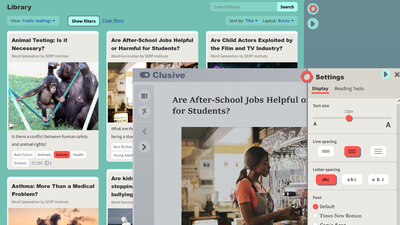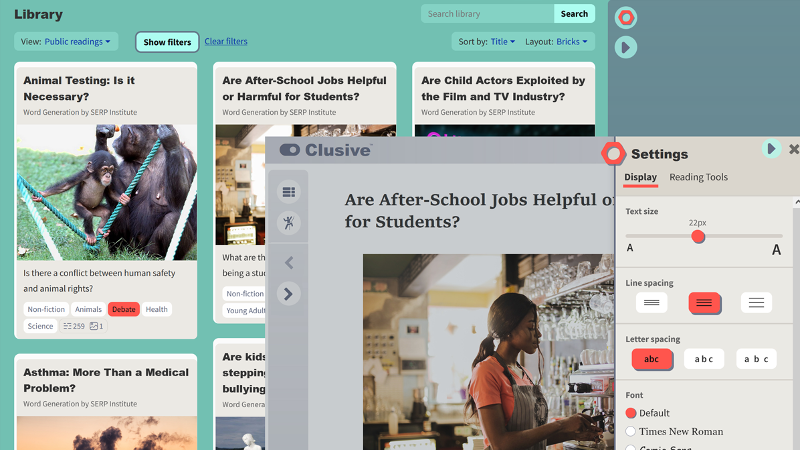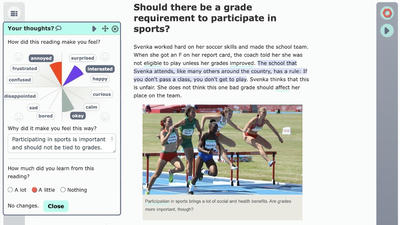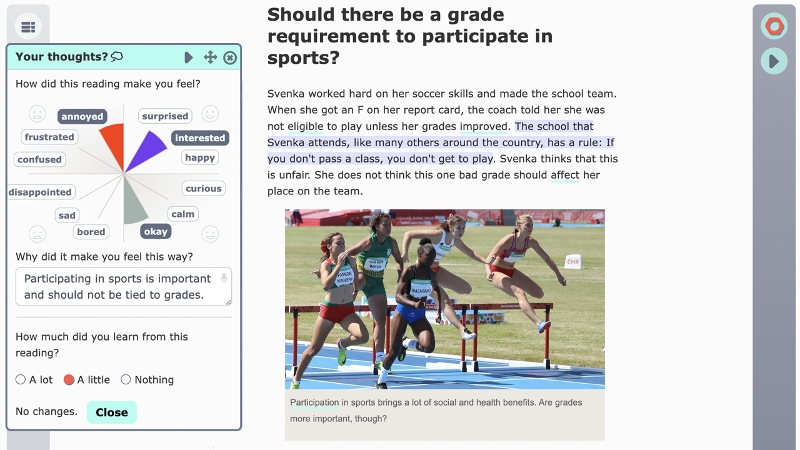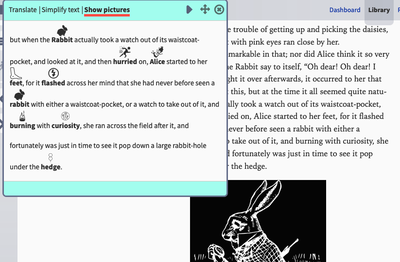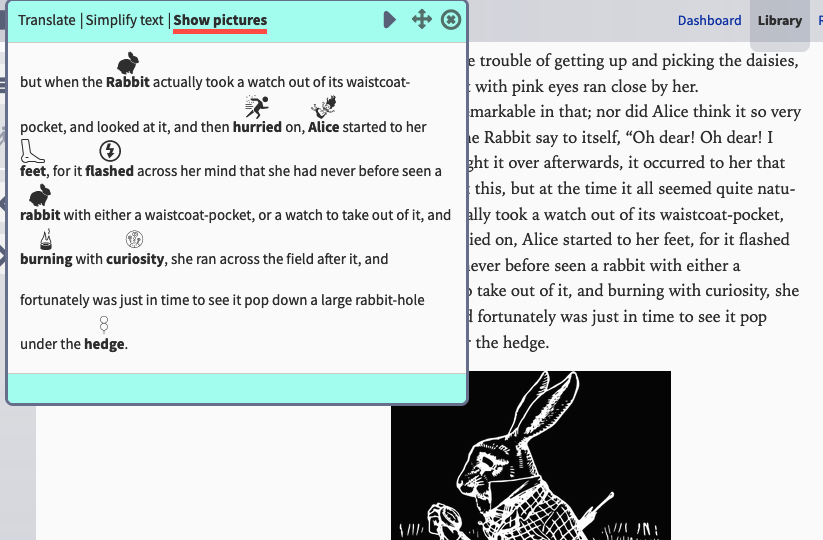Project: Clusive
Clusive is an accessible, supportive reading and learning environment. It was developed as part of the Center on Instructional Software for Learning, funded by the U.S. Department of Education.
Clusive is free for student, parent and teacher use online, and its open-source code is available on Github.
My role: I led the Center as its Principal Investigator, as well as heading up the multi-organization software development effort.
Technologies: Python, Django, PostgreSQL, EPUB, Readium.
Description: At its core, Clusive is an EPUB reader with a high level of customizability (fonts, color schemes, line and letter spacing, etc) and supports (translation, text simplification, dictionary, and more). It includes a library of openly-licensed content as well as the ability to import your own; teachers and parents who import content can share it with students. There are learning supports like highlighting, note-taking, comprehension questions, and emotional reaction check-ins; teacher features like assigning readings, posing custom questions, and tracking student progress.
Some of the innovative features developed in this project:
-
An adaptive vocabulary-support system. This automatically finds the most uncommon words in any reading and checks in with students about them before they start reading. The system tracks both student knowledge of words and the interest they demonstrate in them; based on this a handful of significant words are highlighted in each reading and linked to their definitions. These will change over time and be different for each student.
-
Multiple options for text simplification. We implemented systems for translation (based on Google Translate), pairing of difficult words with simpler synonyms (based on Wordnet, the Python Natural Language Toolkit, and related libraries), and augmenting difficult words with icon-style images (from the Noun Project).
-
"Mood meter" style affective reactions. In addition to checking in with students about their understanding and learning from readings, we have a "reaction wheel" where students can indicate their reaction on a two-dimensional scale (similar to the Yale Mood Meter).
Real-world impact:
- A Clusive Success Story by Joseph Scheuhammer
- Assembling Inclusion Podcast with Katie Nieves Licwinko
